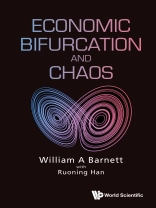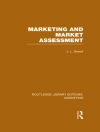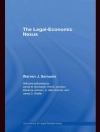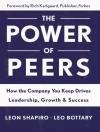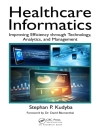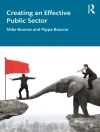Economic Bifurcation and Chaos provides a unified presentation of the contributions to the literature on economic bifurcation, nonlinear dynamics, and chaos by William A Barnett and his coauthors. The span of the research begins in 1988 with Barnett’s initial finding of chaos in economic data. The book continues with subsequent findings of bifurcation in all dynamical macroeconomic models so far tested by Barnett and his coauthors. The research covered extends over 3 decades to his recent findings of Shilnikov chaos in New Keynesian models of the UK and US economies. While methodology for testing for bifurcation, nonlinear dynamics, and chaos are fundamental to the research, the book’s ultimate objectives focus on implications for robustness of dynamical inferences and implications for policy.
Bifurcation subsets are found stratifying the parameter space of all tested macroeconomic models, with confidence regions of parameter estimates crossing the boundaries between those subsets. A robustness problem results from policy simulations conducted only at point estimates of model parameters. Such simulations should be conducted at various locations throughout the confidence region to explore the dynamical implications of such models.
A more dramatic result is acquired in the special case of New Keynesian models during periods of active Taylor rule setting of short-term interest rates. That policy, without the imposition of a long run transversality condition, bifurcates the economy’s dynamics to Shilnikov chaos, implying unintended long run downward drift of interest rates within the Shilnikov fractal attractor set. To control the drift, there needs to be a second policy instrument focused on the long run.
Contents:
- Foreword
- Synopsis
- About the Authors
- Introduction (William A Barnett and Ruoning Han)
- Early Surveys:
- Overview of Part 1 (William A Barnett and Ruoning Han)
- Early Survey Articles:
- Bifurcations in Macroeconomic Models (William A Barnett and Yijun He)
- Nonlinear and Complex Dynamics in Real Systems (William A Barnett, Apostolos Serletis, and Demitre Serletis)
- Time Series Tests:
- Overview of Part 2 (William A Barnett with Ruoning Han)
- Time Domain Tests of Nonlinearity, Bifurcation, and Chaos:
- The Aggregation-Theoretic Monetary Aggregates are Chaotic and Have Strange Attractors: An Econometric Application of Mathematical Chaos (William A Barnett and Ping Chen)
- Robustness of Nonlinearity and Chaos Tests to Measurement Error, Inference Method, and Sample Size (William A Barnett, A Ronald Gallant, Melvin J Hinich, Jochen A Jungeilges, Daniel T Kaplan, Mark J Jensen)
- Frequency Domain Tests for Nonlinearity and Chaos:
- Has Chaos Been Discovered with Economic Data? (William A Barnett and Melvin J Hinich)
- A Competition among Time Series Tests for Nonlinearity:
- Overview of Part 3 (William A Barnett with Ruoning Han)
- A Controlled Experiment Comparing Competing Time Series Tests for Nonlinearity and Chaos:
- A Single-Blind Controlled Competition among Tests for Nonlinearity and Chaos (William A Barnett, A Ronald Gallant, Melvin J Hinich, Jochen A Jungeilges, Daniel T Kaplan, Mark J Jensen)
- Bifurcation:
- Overview of Part 4 (William A Barnett and Ruoning Han)
- Tests for Bifurcation within Closed Economy Macroeconomic Models:
- Empirical Assessment of Bifurcation Regions within New Keynesian Models (William A Barnett and Evgeniya A Duzhak)
- Singularity Bifurcations (William A Barnett and Susan He)
- Existence of Singularity Bifurcationin an Euler-Equations Model of the United States Economy: Grandmont was Right for Nonlinearity and Chaos (William A Barnett and Susan He)
- Bifurcation Boundaries within Open Economy Macroeconomic Models:
- Hopf Bifurcation in the Clarida, Gali, and Gertler Model (William A Barnett and Unal Eryilmaz)
- An Analytical and Numerical Search for Bifurcations in Open Economy New Keynesian Models (William A Barnett and Unal Eryilmaz)
- Monetary Policy and Determinacy: An Inquiry into Open Economy New Keynesian Macrodynamics (William A Barnett and Unal Eryilmaz)
- Capital Control, Exchange Rate Regime and Monetary Policy: Indeterminacy and Bifurcation (William A Barnett and Jingxian Hu)
- Tests for Bifurcation within Endogenous Growth Models:
- Bifurcation Analysis of an Endogenous Growth Model (William A Barnett and Taniya Ghosh)
- Stability Analysis of Uzawa–Lucas Endogenous Growth Model (William A Barnett and Taniya Ghosh)
- Implications of Bifurcation for Robustness of Dynamical Inferences:
- Non-Robust Dynamic Inferences from Macroeconometric Models: Bifurcation Stratification of Confidence Regions (William A Barnett and Evgeniya Aleksandrovna Duzhak)
- Robustness of Inferences to Singularity Bifurcations (William A Barnett and Yijun He)
- Structural Chaos and Policy:
- Editors’ Overview of Part 5 (William A Barnett with Ruoning Han)
- Shilnikov Chaos:
- Shilnikov Chaos, Low Interest Rates, and New Keynesian Macroeconomics (William A Barnett, Giovanni Bella, Taniya Ghosh, Paolo Mattana, and Beatrice Venturi)
- Is Policy Causing Chaos in the United Kingdom? (William A Barnett, Giovanni Bella, Taniya Ghosh, Paolo Mattana, Beatrice Venturi)
- Fractal Attractor Geometry and Macroeconomic Policy:
- Controlling Chaos in New Keynesian Macroeconomics (William A Barnett, Giovanni Bella, Taniya Ghosh, Paolo Mattana, and Beatrice Venturi)
- References
- Author Index
- Subject Index
Readership: Advanced undergraduate and graduate students, researchers, and practitioners in the fields of economics and finance, as well as scientists in physical sciences and engineering who are interested in methodological developments and applications of nonlinear dynamics, bifurcation, and chaos in economics.
William A Barnett is the Oswald Distinguished Professor of Macroeconomics at the University of Kansas and Director at the Center for Financial Stability in New York City. His MIT Press book, Getting It Wrong, won the American Publisher’s Award for Professional and Scholarly Excellence (the PROSE Award), and his book with Nobel Laureate, Paul Samuelson, Inside the Economist’s Mind, has been translated into seven languages. He is the originator of the Divisia Monetary Aggregates and the Barnett Critique. He has published widely on tests for nonlinear dynamics, chaos, and bifurcation and on financial aggregation and index number theory.He is Founder and was First President of the Society for Economic Measurement. He is Founder and Editor of the Cambridge University Press journal, Macroeconomic Dynamics, and of the Emerald Press monograph series, International Symposia in Economic Theory and Econometrics. He is Founder and Director of the Institute for Nonlinear Dynamical Inference.He has received over 45 awards and honors and has authored over 200 articles published in professional journals and 41 books as author or editor. Special issues of the Journal of Econometrics, Econometric Reviews, and the Journal of Financial Stability have been published in his honor.He is on the Research.com list of the ‘Top Economics and Finance Scientists in the World.’ Prior to becoming an economist, he was one of the engineers who developed the rocket engines for Apollo.Ruoning Han is currently an Assistant Professor of Economics at Whitman College, where she also serves as the faculty advisor for the Whitman Investment Company, a student-run organization managing over $1.7 million of the college’s endowment. In addition, she serves as the faculty advisor for the Whitman’s Finance Accelerator Program, which accelerates students’ knowledge in finance careers and connects them with alumni in the finance sector. Prior to joining Whitman College, she was a Visiting Assistant Professor at Tulane University.Dr Han’s research interests are in financial economics, development economics, and monetary economics. Her most recent research focuses broadly on financial institutions and access to financial services. One aspect of her research centers on the design of prudential regulation for the stability of the banking sector and the design of lending contracts for microfinance institutions. Another aspect of her research studies consumption and income smoothing of poor families through the use of financial services.
‘Understanding deep structural parameters has been the goal of macroeconomics since Frisch, Haavelmo, Marschak, and Lucas. This book is the deepest exploration yet. Drawing on modern systems dynamics, in a highly original body of work, Barnett with coauthors creatively explores intrinsic chaotic and instability features of influential macro models. The book analyzes how systems with many interacting parts behave as a whole. It gives an important warning against naïve empirical macro modelling that ignores intrinsic instability in making its policy forecasts. It is a guide to understanding the deep structural features of modern economics and how to account for them in policy analysis. This research imposes a new level of rigor on the field of macroeconomics that serves to make it more credible.’ – James J Heckman Nobel Laureate in Economics Henry Schultz Distinguished Service Professor of Economics, University of Chicago, Chicago, IL, USA
‘This marvelous, path-breaking book by William A Barnett with Ruoning Han is the product of many years during which Barnett has been at the frontiers of research in economic theory and econometrics, and of the implications of that research for economic policy. Economic Bifurcation and Chaos brings together some of Barnett’s articles on bifurcation, chaos, and nonlinear dynamics, showing, among other things, how bifurcation and nonlinear dynamics compromise the robustness of dynamical inferences when policy simulations are based on point estimates of the parameters. The book is structured into well-organized sections; the writing is clear and concise; and a variety of theoretical models, including New Keynesian and endogenous growth models, are analyzed. Barnett has not only been a contributor at the frontiers of economic research, but as this book reminds us, he has been pushing those frontiers.’ – George S Tavlas Alternate to the Governor of the Bank of Greece, Governing Council of the European Central Bank, and Distinguished Visiting Fellow, Hoover Institution, Stanford University, Stanford, CA, USA
‘Some leading macroeconomists argue against writing papers for ‘smart people’ and say that models should be simple enough for Congressmen to understand. In Economic Bifurcation and Chaos, William A. Barnett and his collaborators show that even the simple models embraced by macroeconomists are far more complex than they admit, when one takes into account uncertainty about the key parameters. The real world is far more complex than any current macro model, and the methods described here can be used to produce the better models we need. Bill is a true scholar who wants to first understand economic processes and then worry about how to describe what he finds to those who can’t handle the math.’ – Kenneth Judd Paul H Bauer Senior Fellow, Hoover Institution, Stanford University, Stanford, CA, USA
‘The book Economic Bifurcation and Chaos by William A Barnett with Ruoning Han, through a unification of seminal papers by Barnett and his coauthors, enables the reader to better understand the dynamics of economic fluctuations. This exceptional volume relies on more than 30 years of first-rate research by Barnett and his coauthors on bifurcation, chaos, and nonlinear dynamics, providing a valuable reference on these topics. Interestingly, the book presents theoretical tests and background to test for bifurcation, chaotic dynamics, and complexity along with several empirical pieces providing evidence and illustrations of these properties with economic data. This well-argued contribution is a must-read manuscript.’ – Fredj Jawadi Professeur des Universités, University of Lille, France
‘The study of bifurcations and chaos remains one of the most attractive and actively developing areas in nonlinear deterministic dynamics. The complexity of a rigorous mathematical analysis of these phenomena, multiplied by the complexity of real mathematical models in economics, makes me admire the authors who set themselves such an ambitious goal and were able to take the study of bifurcations and chaos in economics to a fundamentally new level. As Johann Wolfgang von Goethe said, ‘Whatever you can do or dream you can, begin it. Boldness has genius, power and magic in it!’ – Nikolay V Kuznetsov Member Russian Academy of Science, and Head of Laboratory, IPME RAS, St. Petersburg State University, Russia
‘Natural scientists have long recognized the importance of non-linearities and chaotic dynamics in physical systems. But until recently, economists have worked almost exclusively with linear approximations to economic models, driven by random shocks. Professor Barnett is an exception. For forty years he has been a pioneer of the applications of chaos theory to economic models. This volume introduces the reader to the theory and application of chaos theory to economic models and is essential reading for applied researchers and graduate students who are interested in the future of nonlinear models in economics.’ – Roger E A Farmer Professor of Economics, University of Warwick, UK and Emeritus Distinguished Professor, UCLA, Los Angeles, CA, USA
‘For more than 30 years, William A. Barnett has been a pioneer with his research on chaos and nonlinearities in economic systems. This volume brings together much of this work with collaborators in one place. It is well organized in the way it leads the reader from some of the early work on empirical testing for the presence of chaos to the most recent applications of Shilnikov chaos in simple macroeconomic models. This book spans theory, empirical testing, and policy applications in one place. It guides the reader on the importance of chaos in the social sciences, and in particular, modern macroeconomics. It will serve as a useful reference for any researcher interested in the critical importance of complex dynamics in economic modeling and policy.’ – Blake Le Baron Abram L and Thelma Sachar Professor of International Economics, Brandeis University, Waltham, MA, USA
‘This volume brings together an important array of results and techniques to study macroeconomic dynamics. Bill Barnett has been one of the pioneers in exploring the application of dynamical systems, bifurcations, and chaos to the study of macroeconomic models. Remarkably, Barnett’s research provides inference methods to measure the potential for complex dynamics in the economy. In this book, Barnett with Han provide a guided tour to several decades of research on the subject, making it essential reading for those who wish to study how endogenous fluctuations and non-linear dynamics can emerge, and to how surprising dynamic paths can emerge out of possibly small economic shocks and economic policy changes.’ – Gaetano Antinolfi Professor of Economics, Washington University in St. Louis, UK
‘William A Barnett is a leading scholar of chaos theory and practice as applied to the economy. Economic Bifurcation and Chaos, co-authored with Ruoning Han, traces the evolution of the state-of-the art thinking about chaos in the economy with innovative policy applications. Barnett and early co-author Ping Chen were the first scholars to detect the existence of chaos in an economic time series. Later, Barnett led the use of complex systems research to model economic fluctuations, broadening the source of macro disturbances from solely exogenous shocks to market or endogenous sources with nonlinear economic structure. Lastly, Economic Bifurcation and Chaos also offers potential paths for future central bank policy design, econometric modeling, and communication strategies well worth contemplating by academics and officials.’ – Lawrence Goodman President, Center for Financial Stability, New York, NY, USA
‘Economic systems are inherently nonlinear and dynamic. William A Barnett and his coauthors have been pioneers in recognizing this crucial, yet often ignored, reality and incorporating it into their modelling of economic systems. This volume provides a unified treatment of this research carried out over more than 30 years. The presentation is clearly organized and provides an essential reference source for anyone wishing to familiarize themselves with these developments and participate in this important research agenda.’ – Stephen J Turnovsky Van Voorhis Professor of Economics, University of Washington, Seattle, WA, USA
‘This book is a valuable addition that addresses a significant gap in the existing literature on the applications of dynamical systems with complex chaotic dynamics in economics. Its final section, consisting of 3 chapters, draws on a collection of pioneering co-authored works by W A Barnett, revealing the nature and universality of spiral chaos associated with the Shilnikov saddle-focus, discovered in low-order interest rate models, highlighting common dynamic features in both US and UK macroeconomics.’ – Andrey Shilnikov Distinguished University Professor, Neuroscience Institute, Department of Mathematics and Statistics, Georgia State University, Atlanta, GA, USA
‘William A Barnett has been one of the important contributors to the study of bifurcations and chaos in non-linear economic models, as well as the empirical assessment of such models. Since 1970s, it has been known that periodic or limit cycles and chaotic dynamics can easily occur in OLG models, in basic multisector optimal growth models, and in macroeconomic Neo-Keynesian models with various monetary and fiscal policies, as well as in dynamic non-linear macroeconomic models with borrowing constraints and in search models, provided that they are not linearized to eliminate complex dynamics. Barnett has made important contributions to this literature, both empirically and theoretically. This book is a compilation of some of Barnett’s co-authored articles on this subject, organized into well-organized sections. One set of articles presents statistical and econometric tests for the existence of chaotic dynamics in various economic data and for their robustness. Another set of articles provides an overview of the recent mathematics that generate bifurcations and chaotic economic dynamics, applied to various Neo-Keynesian models that study business cycle stabilization policies, both in closed and open economies, as well as in endogenous growth models. The combination of various theoretical models together with their empirical assessment makes this book a very valuable resource for anyone working in the area of non-linear macroeconomic dynamics.’ – Jess Benhabib Paulette Goddard Professor of Political Economy, New York University, New York, NY, USA
‘William A Barnett has been a pioneer in the demonstration of the importance of understanding dynamic economic phenomena through the lens of nonlinear systems. The importance of phenomena such as chaos and bifurcations in understanding aggregate fluctuations is in large measure due to his work. Economic Bifurcation and Chaos, coauthored with Ruoning Han, integrates a set of Barnett’s seminal papers into a unified collection and will be an invaluable resource to macroeconomists and economic theorists.’ – Steven Durlauf Frank P Hixon Distinguished Service Professor and Director of the Stone Center for Research on Wealth Inequality and Mobility, University of Chicago Harris School of Public Policy, Chicago, IL, USA
‘This volume collects and organizes more than three decades worth of economic research on bifurcation, chaos, and nonlinear dynamics produced by William A Barnett and his collaborators. It is sure to be a valuable resource, both to students looking for an introduction to these important topics and established researchers who wish to have the many results all conveniently assembled in one place.’ – Peter Ireland Murray and Monti Professor of Economics, Boston College, Chestnut Hill, MA, USA and Member, Shadow Open Market Committee
‘Economies are complex and non-linear. Thus, economic research must necessarily account for chaotic phenomena and bifurcations. This statement, now seemingly axiomatic, required substantial effort to establish with solid scientific foundation and to gain legitimacy within traditional economics. William A Barnett is a prominent pioneering and leading force in this endeavor. This book offers a comprehensive view of the theoretical and empirical aspects he and his collaborators have addressed over the past thirty years. Well-organized, highly readable, and extremely motivating, it is a must-read for both novices and experts alike.’ – Christophe Deissenberg Professeur des Universités, Aix-Marseille Université, France
‘This book summarizes the 30 plus years of research by William A Barnett in the area of applications of chaotic dynamics to economic systems, both from empirical and theoretical points of view. Complexity of the mathematical approach, noisiness of economic data, and necessity to apply the theories developed for backward-looking dynamical systems to nonlinear expectational equations all contribute to the difficulty of this research program. This book shows how it is possible to look for evidence of chaotic dynamics in economic data and finds hidden problems with profound policy implications in well-known models used for monetary policy analysis. Anyone interested in modeling approaches beyond log-linearized models with small stochastic shocks will find this volume an interesting and useful reading.’ – Sergey Slobodyan Citigroup Endowment Associate Professor, CERGE-EI, Czech Republic
‘William A Barnett and coauthors have done a lot of original and highly productive research in dynamic macroeconomics as well as in monetary economics. The reader will be well rewarded by careful study of this extensive collection of Barnett and his coauthors’ research.’ – W A Brock Vilas Research Professor Emeritus, University of Wisconsin, Madison and Research Professor, University of Missouri, Columbia, MO, USA
